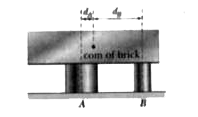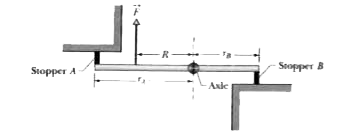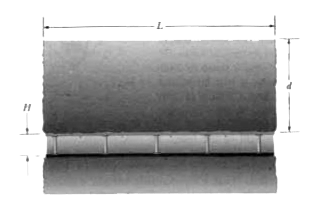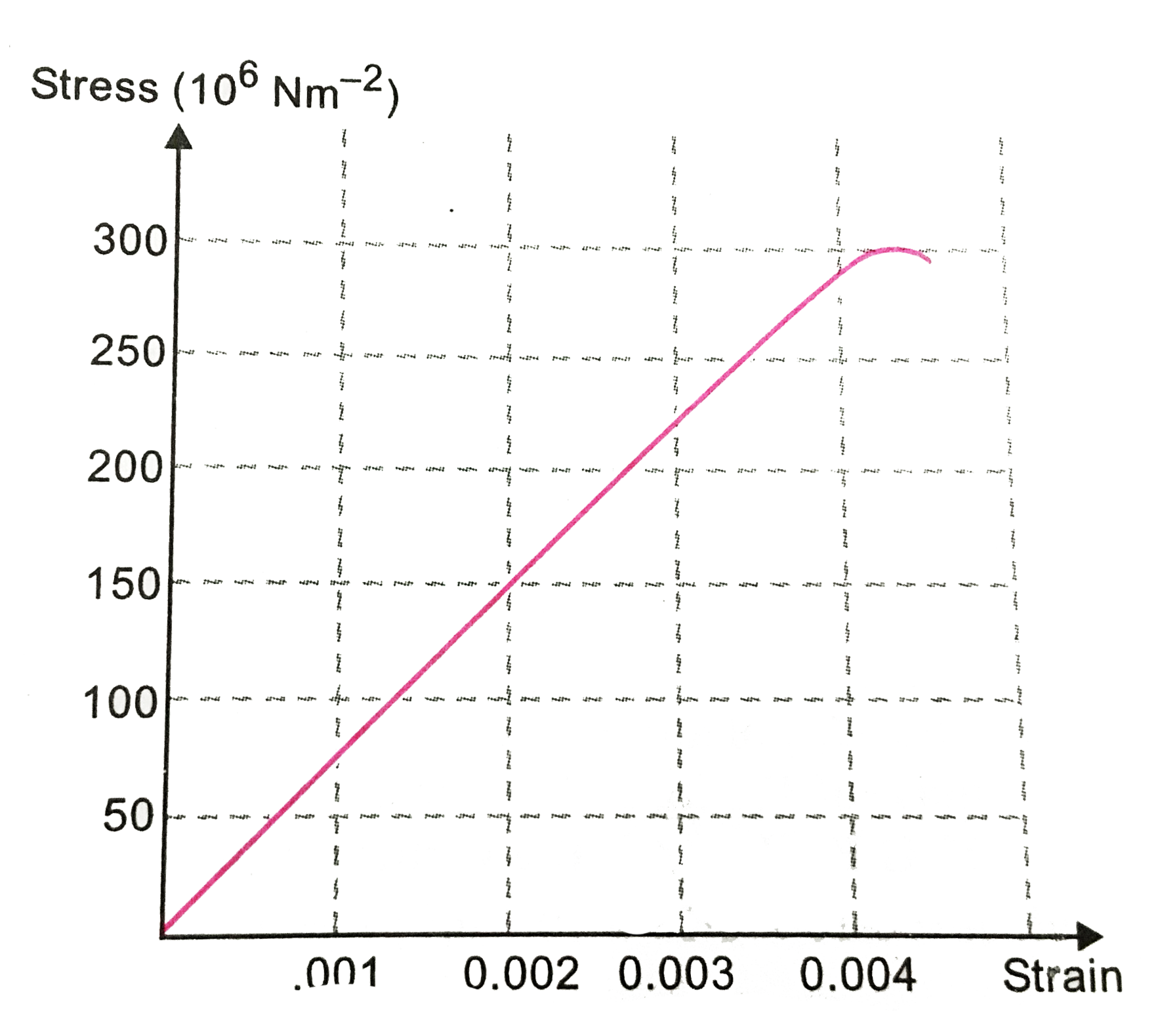PROBLEMS from RESNICK AND HALLIDAY PHYSICS (HINGLISH) ELASTICITY for Class 12
| Class 12 | PHYSICS |
| Chapter | ELASTICITY |
| RESNICK AND HALLIDAY PHYSICS (HINGLISH) | PROBLEMS |
| Medium | English |
| Academic Year | 2023-2024 |
Question 2
In Fig, a lead brick rests horizontally on cylinders A and B. The areas of the top faces of the cylinders are related by AA=2.2AB, the Young's moduli of the cylinders are related by EA=2.2EB. The cyclinders had identical lengths before the brick was placed on them. What fraction of the brick's mass is supported (a) by cylinder A and (b) by cylinder B ? The horizontal distances between the center of mass of the brick and the centerlines of the cylinders are dA for cylinder A and dB for cylinder B. (c ) What is the ratio dA/dB ?
 View Solution
View SolutionQuestion 3
A 1500 kg load is hung from the free end of a horizontal aluminum rod of length 7.0 cm, diameter 9.6 cm, and negligible mass. The other end of the rod is fixed in place. The shear modulus of aluminium is 3.0×1010N/m2. Find (a) the shear stress on the rod and (b) the vertical deflection of the rod's free end. View SolutionQuestion 4
Figure shows an approximate plot of stress versus strain for a spider - web thread, out to the point of breaking at a strain of 2.00. The vertical axis scale is set by values a=0.10GN/m2,b=0.30GN/m2, and c=0.85GN/m2. Assume that the thread has an initial length of 0.80 cm, an initial cross - sectional area of 8.0×10−12m2, and (during stretching) a constant volume. The strain on the thread is the ratio of the change in the thread's length to that initial length, and the stress on the thread's length to that initial length, and the stress on the thread is the ratio of the collision force to that initial cross - sectional area. Assume that the work done on the thread by the collision force is given by the area under the curve on the graph. Assume also that when the single thread snares a flying insect, the insect's kinetic energy is transferred to the strtching of the thread.
(a) I low much kinetic energy would put the thread on the veger of breaking ? What is the kinetic energy of (b) a fruit fly of mass 6.00 mg and speed 1.70 m/s and (c )a bumble bee of mass 0.388 g and speed 0.420 m/s ? Would (d) the fruit fly and (e ) the bumble bee break the thread ?
 View Solution
View SolutionQuestion 5
In Fig, a 103 kg uniform log hangs by two steel wires, A and B, both of raius 0.600 mm. Initially, wire A 2as 2.50 m long and 2.00 mm shorter than wire B. The log is now horizontal. What are the magnitudes of the forces on it from (a) wire A and (b) wire B ? (c ) What is the ratio dA/dB ?
 View Solution
View SolutionQuestion 6
Figure is an overhead view of a rigid rod that turns about a vertical axle until the identical rubber stoppers A and B are forced against rigid walls at distances rA=5.0cm and rB=2.0cm from the axel. Initially the stoppers touch the walls without being compressed. Then force →F of magnitude 150 N is applied perpendicular to the rod at a distance R = 5.0 cm from the axle. Find the magnitude of the force compressing (a) stopper A and (b) stopper B.
 View Solution
View SolutionQuestion 7
A tunnel of length L = 200 m, height H = 7.2 m, and width 6.3 m (with a flat roof) is to be constructed at distance d = 70 m beneath the ground. The tunnel roof is to be supported entirely by square steel columns, each with a cross - sectional area of 960cm2. The mass of 1.0cm3 of the ground material is 2.8 g.
(a) What is the total weight of the ground material the columns must support ?
(b) How many column are needed to keep the compressive stress on each column at one - half its ultimate strength ?
 View Solution
View Solution

